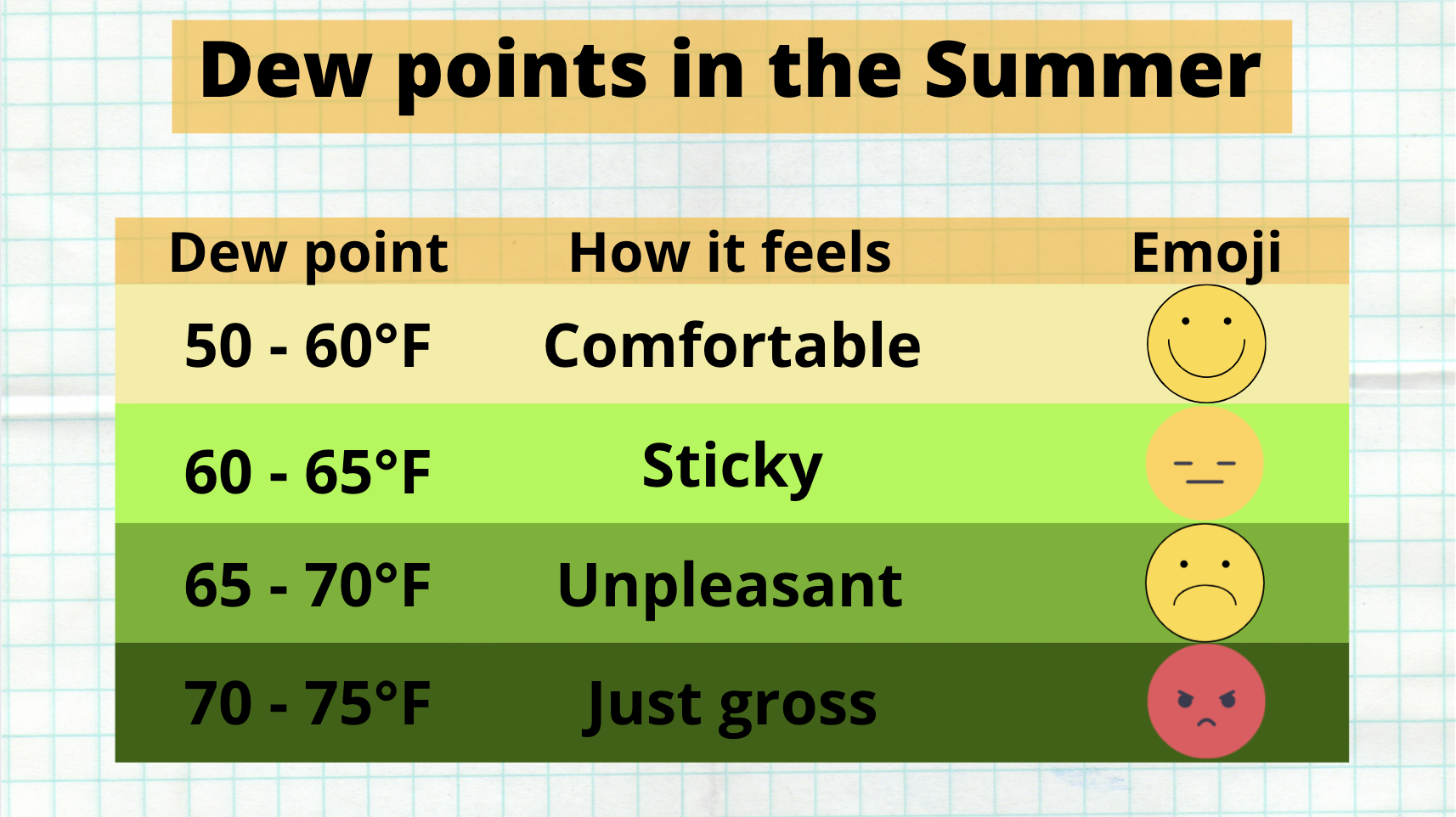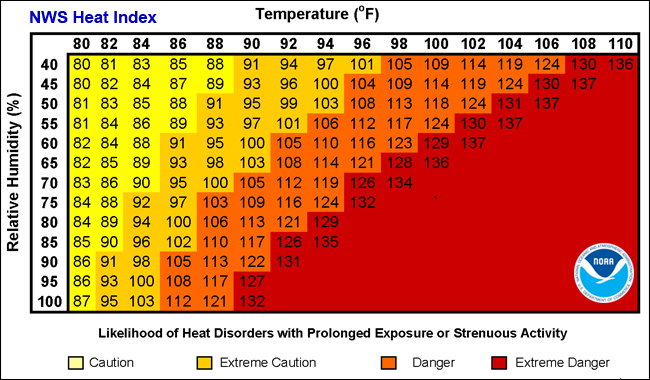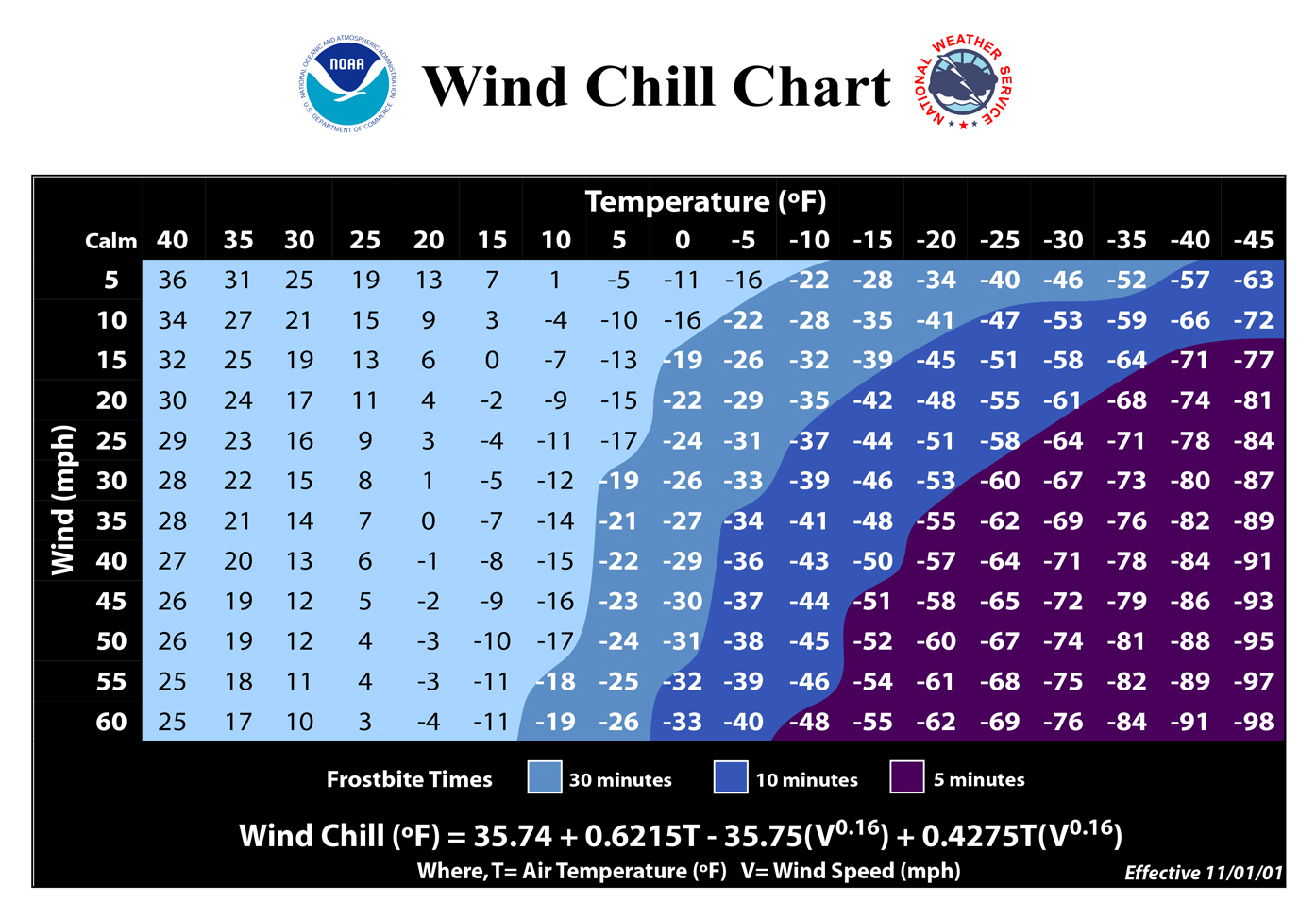Meteorology and You - Measuring Your “Comfort Level”
First off, thank you to the reader for taking a moment to read this blog post. This is the first of many weather ramblings I’ll write in the hopes of providing some insight into the complicated world of weather.
Weather impacts all of us. No one can escape the daily changes of weather.
As a meteorologist, my job is to predict and explain the weather so you can plan your day to day tasks. Part of this task includes breaking down complicated weather jargon.
In this first blog post, I’ll break down a few meteorological concepts: Temperature, and factors impacting how “comfortable” it feels when you step outside.
Two popular scales for measuring temperature
Scientifically, temperature is the measure of kinetic energy, which is the energy a particle has because of its motion. The faster particles move, the warmer the temperatures, whereas slower movement means cooler temperatures.
Even more simply put, the temperature is the measure of coldness or hotness. We measure it using the Fahrenheit scale. Where 32 degrees Fahrenheit is where water freezes and 212 degrees is when water boils. The Celsius scale measures temperature with a freezing point at 0 degrees and a boiling point of 100 degrees. There’s also the Kelvin scale but I won’t go into it today.
Fun fact- Most countries use the Celsius scale when measuring temperature. Only seven countries use the Fahrenheit scale. This includes the United States and its territories, as well as the Bahamas, Palau, Belize, the Cayman Islands, the Federated States of Micronesia, the Marshall Islands.
Dew point- A measurement for determining water vapor in the atmosphere
Measuring the humidity of the air is difficult with meteorological instruments. One tool meteorologists use to measure humidity is the dew point temperature. Dew point temperature CAN be measured in the atmosphere.
Definition - Dew point is the lowest temperature air can cooled under constant pressure before saturation occurs (and dew forms). Saturated air holds the maximum amount of water.
Remember, the dew point is a measurement of moisture in the atmosphere, and not technically a temperature. The dew point can never be higher than the temperature, or else a cloud forms.
A higher dew point means a higher amount of moisture in the atmosphere, and the muggier it feels.

So, in the summer if the dewpoint is 60 degrees or less, the air feels dry and comfortable. Dew points between 60 and 65 degrees are sticky and even higher than 65 basically feels like you’re swimming in gulf moisture. When that happens the phrase “It wouldn’t be so bad if it weren’t for the humidity” comes to mind.
Relative humidity- what it means
The relative humidity is also a popular way to portray the moisture content in the atmosphere and describe how sticky it feels outside. Generally, the higher the humidity outside the more “uncomfortable” it feels.
However, relative humidity (RH) is very dependent on temperature. Diving slightly deeper, RH is a measure of the water vapor in the atmosphere relative to how much moisture the atmosphere can hold at a given temperature.
RH is given as a percentage. That is how you’ll see it displayed on TV weather maps. Depending on the time of year, high RH feels very different in the summer than in the winter.
For example, in the winter you could have a temperature of 34 degrees with a dew point of 23 degrees. This would give you a 92% RH. Now, in the summer you could have a temperature of 95 degrees and a dew point of 75 degrees. Which would give you a RH of 55%.
In which case would the air actually “feel” more humid?
In the summer of course. Why?
Warmer air holds more moisture than colder air. Even though the RH is technically higher in the winter, the air is not holding as much moisture as it would with a 95 degree temperature in the summer. This makes it “feel” more humid and “uncomfortable". This concept is known as absolute humidity, which is the term used to describe the physical amount of water in the air and is not relative to the temperature.
Measuring your “Comfort level” with the Heat Index
In the summer, while the relative humidity is often lower compared to the winter, it feels more humid and muggy outside. The tool used to portray this is known as the Heat Index, which uses the air temperature and humidity to measure how hot it actually feels.
On weather maps, you’ll see the Heat Index displayed as a temperature. Consider the example given above, where the temperature is 95 degrees with a dew point of 75 degrees, the RH calculated is 55%. However, the Heat Index is 107 degrees. Yikes.
You will want to be extra cautious in the summer when the Heat Index is high as you will be at greater risk for heat exhaustion and heatstroke.

Wind chill- The winter’s version of the Heat Index
In the summer the saying goes, “It wouldn’t be so bad if it weren’t for the humidity.” Well, now comes the winter when the wind is piercing through your jackets like a knife. You may find yourself saying “It wouldn’t be so bad if it weren’t for the wind!”
Wind Chill is the cooling effect of wind on a surface and describes how the wind feels on your skin. Wind Chill is dependent on the air temperature and the wind speed.
So, say the air temperature is 40 degrees outside, but you have a wind of 25mph, it will “feel” like 29 degrees outside. The stronger the wind the colder the air will feel. There is also an increased risk of hypothermia when the winds are stronger on cold days. Winds cause your body to lose heat faster.
Remember, Wind Chill is how the air temperature feels on your skin. So if the road is wet and the wind chill is in the mid-20s, but the temperature is above freezing, roads are not at risk for freezing.

Comfort levels outside are not solely based on temperatures. There are many meteorological variables that alter how the air feels. Whether it’s the Heat Index or Wind Chill bothering you, my only advice is good luck! Limit time outdoors if possible, especially when the Heat Index is high and Wind Chill particularly low.
